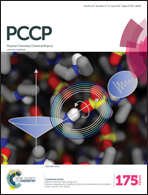Self-healing properties of nanocrystalline materials: a first-principles analysis of the role of grain boundaries
Abstract
Understanding the self-healing mechanisms of defects in nanocrystalline materials is of particular importance for developing structural materials that can support the extended lifetime of components under extremely hostile conditions in nuclear reactors. Since grain boundaries are prevalent in nanocrystalline materials, they must affect, to some extent, the overall self-healing properties and the resultant mechanical responses. In the present work, first principles calculations are carried out to investigate the energetic landscape of point defects (i.e. self-interstitials, He-interstitials, and vacancies) induced by the irradiation damage and the kinetics of the self-healing process in the vicinity of grain boundaries (GBs) in copper, focusing on six symmetric tilt grain boundaries that vary in their energies. Our results indicate that the interaction of vacancies with the self-interstitial- and He-interstitial-loaded GBs is very sensitive to the GB character. Low-energy GBs are generally accompanied by a higher propensity for self-healing behavior, in which the inter-granular interstitials and intra-granular vacancies recombine with each other. The recombination process is proved to be regulated by two mechanisms: the interstitial emission mechanism and the vacancy mediated mechanism. For low-energy GBs, the former mechanism demonstrates its efficiency in describing the atomic motion, while for the high-energy ones, the latter turns out to be superior. With the aid of these mechanisms, we conclude that low-energy GBs are comparatively more radiation-resistant than the high-energy counterparts, which may shed light on the rational design of high-performance structural materials based on nanocrystalline alloys.


 Please wait while we load your content...
Please wait while we load your content...